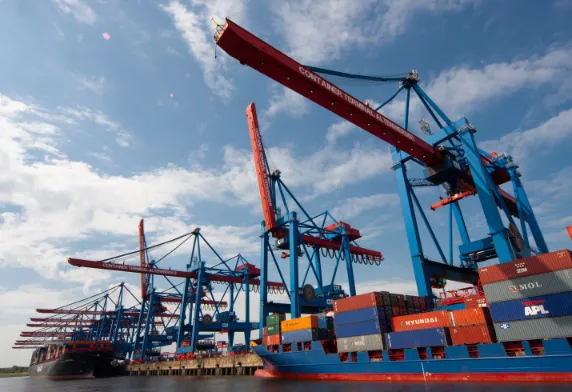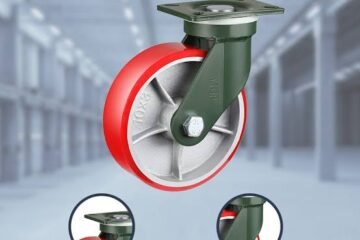Tasmania, an island state benefiting from its natural resources and expanding tourism, needs a strong transportation network to link businesses, communities, and markets. Improving this network is vital for economic expansion and maintaining Tasmania’s global competitiveness. This article examines significant parts of Tasmania’s freight sector and emphasizes effective ways to improve its transportation network, which includes identifying dependable freight companies in Tasmania.
The Importance of an Optimized Transportation Network
A strong transportation network is the foundation of any successful economy. This is particularly relevant for Tasmania, considering its island location and its dependence on sea and air connections to both mainland Australia and global markets. A properly functioning freight system guarantees the prompt and affordable transportation of goods, which supports vital sectors like agriculture, forestry, manufacturing, and tourism.
Improving this network leads to lower transportation costs, improved supply chain performance, and greater competitiveness for Tasmanian businesses. Selecting the right freight companies in Tasmania is critical to achieving these benefits.
Key Components of Tasmania’s Freight Network
Tasmania’s freight network comprises several key components:
Road Network
The road network carries the highest freight volumes and is crucial for connecting major ports and industrial and population centers. The Burnie to Hobart corridor is the primary freight corridor, handling the largest volume of goods.
Rail Network
The rail network, owned and operated by TasRail, is vital in transporting bulk commodities and intermodal freight. The network spans 611 route kilometers of operational track, connecting major shipping ports and freight hubs.
Sea Ports
Four major sea ports at Burnie, Devonport, Hobart, and Bell Bay serve as critical trade gateways, handling most of Tasmania’s import and export activities.
Airports
Major airports in Hobart and Launceston provide air freight connectivity for time-sensitive goods and specialized cargo.
Challenges and Opportunities in Tasmania’s Freight Landscape
Despite having a relatively well-developed transportation network, Tasmania faces several challenges:
- Island Geography: Tasmania’s island status creates a reliance on sea and air links, which can be more expensive and time-consuming than land-based transportation.
- Limited Scale: The relatively small size of the Tasmanian market can limit economies of scale in transportation, leading to higher freight costs.
- Infrastructure Constraints: Certain segments of the road and rail networks may face capacity constraints or require upgrades to accommodate future freight growth.
However, these challenges also present opportunities for innovation and improvement:
- Strategic Investments in Infrastructure: Targeted road and rail infrastructure investments can improve network efficiency and reduce transportation costs.
- Enhanced Intermodal Connectivity: Improving connections between road, rail, and sea ports can facilitate seamless freight movement and optimize supply chains.
- Technological Advancements: Embracing new technologies, such as intelligent transport systems and data analytics, can enhance network management and improve freight efficiency.
Efficient Solutions for Streamlining Tasmania’s Transportation Network
To optimize Tasmania’s transportation network and address existing challenges, several efficient solutions can be implemented:
Prioritize Infrastructure Investments
Focus investments on upgrading key freight corridors, such as the Burnie to Hobart corridor, to improve road capacity and reduce congestion. Enhance rail infrastructure to increase its competitiveness for bulk freight transport.
Improve Intermodal Connectivity
Develop integrated transport hubs that facilitate seamless transfer of goods between road, rail, and sea. This can reduce handling times and improve overall supply chain efficiency.
Leverage Technology for Network Management
Implement intelligent transport systems (ITS) to monitor traffic flows, optimize routing, and provide real-time information to freight operators. Utilize data analytics to identify bottlenecks and improve network performance.
Promote Sustainable Transportation Practices
Encourage the use of more fuel-efficient vehicles and promote the adoption of alternative fuels to reduce emissions from the transport sector. Encourage the growth of charging stations for electric vehicles to facilitate the transition to cleaner transportation options.
Streamline Regulatory Processes
Simplify and streamline regulatory processes related to freight transport, such as permitting and licensing, to reduce administrative burdens and improve efficiency.
Foster Collaboration and Coordination
Encourage collaboration and coordination among government agencies, industry stakeholders, and community groups to develop and implement integrated transport solutions.
The Role of Rail in Enhancing Freight Efficiency
TasRail is crucial in Tasmania’s freight network, particularly in transporting bulk commodities. Recent investments in rail infrastructure and maintenance have improved the safety and reliability of freight rail operations. Further opportunities exist to enhance the competitiveness of rail transport:
Targeted Infrastructure Upgrades: Continue to invest in upgrading rail infrastructure, including track improvements and bridge strengthening, to accommodate heavier loads and faster train speeds.
Improved Operational Efficiency: Implement measures to improve operational efficiency, such as optimizing train scheduling and reducing turnaround times at freight terminals.
Enhanced Intermodal Capabilities: Develop intermodal terminals that facilitate seamless transfer of goods between rail and other modes of transport.
The Importance of Road Network Management
While rail plays a vital role, most of Tasmania’s freight is carried by road. Effective road network management is essential for ensuring efficient freight movement:
- Strategic Road Maintenance: Implement a proactive road maintenance program to ensure the road network remains in good condition and minimize disruptions to freight transport.
- Traffic Management Strategies: Utilize traffic management strategies, such as variable speed limits and real-time traffic information, to optimize traffic flow and reduce congestion.
- Heavy Vehicle Access Management: Develop a streamlined access program for heavy vehicles that provides safe and efficient solutions for freight operators.
Conclusion
Streamlining Tasmania’s transportation network is essential for supporting economic growth, enhancing competitiveness, and ensuring the efficient movement of goods. By prioritizing infrastructure investments, improving intermodal connectivity, leveraging technology, promoting sustainable transportation practices, and fostering collaboration among stakeholders, Tasmania can create a transportation network that meets the needs of its businesses and communities for years to come. Investing in Tasmania’s transport infrastructure will translate to lower freight costs for business and industry.



